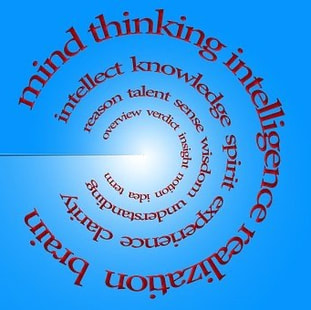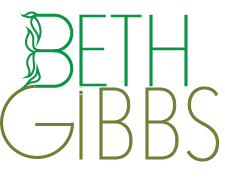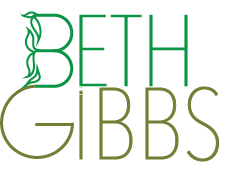ENLIGHTEN UP! a blogSelf-awareness stories: lighting our way to clarity, contentment and resilience in a complicated world.
|
 Clarity is an essential qualability (quality + ability) to embody if you want to understand who you are, how the difficulties you face make you feel and why you react or respond to them the way you do. Clarity means seeing things as they are, not how you want or wish them to be. When you bring clarity to your life, especially during times of change and turbulence, you will have a better understanding of yourself on all levels of being, physical, energetic, psycho-emotional, intuitive wisdom and bliss. You will understand the what, how and why your thoughts, emotions and beliefs (helpful and unhelpful) feed your habits, health, behavior and well-being. When you bring clarity, especially mental clarity, to an issue or situation, you see what is happening, correctly assess the situation and then consciously choose to take action to support your goals. If clarity is not one of your strengths, you will likely find yourself bumping into the challenge of misperception, the opposite of clear seeing. Misperception is a wrong or incomplete understanding of what you think and do. Misperception is often influenced by past experience and how you may mis-remember it. This, coupled with unconscious thought and belief patterns, affects thinking and feeling in the present and causes misperception. Here are three examples of how misperception can play out: 1. If your perception of a situation is wrong, wrong action likely follows. 2. If your perception is correct but you doubt yourself, you may take no action or wrong action. 3. If your perception is correct and you are clear in your understanding, right action will result even if the outcome is not what you expected or hoped for. This, in a nutshell, is the goal of personal growth, self-help and yoga. Here’s a personal example. Growing up as a Black woman in America, I was forced to become socially self-aware in order to navigate my way through life in the face of prejudice and bias from others. My mother, and my great aunt drilled lessons in self-reliance and independence into me from toddlerhood. What I heard was, “You have to get an education and a good job. You must always be independent and self-reliant because you will face a world that is stacked against you.” I misinterpreted those lessons to mean that I am always responsible for how people see and treat me. And if I fail, it’s my fault. As a result of that misunderstanding, I struggled into adulthood as a people-pleasing over-achieving co-dependent maladaptive perfectionist. Was I hard on myself trying to do it all? Yes. Did I think I was working with a clear understanding of my situation? Yes. Was I, really? No. In a nutshell: I took wrong action as a result of not having a clear perception and understanding of myself, and the situation. Now I have some clarity and am in the process of rearranging my internal landscape. Phew! To increase the presence of clarity in your life begin with self-awareness, a process that can involve reading, workshops, self-reflection, journaling, therapy, support groups, a daily yoga practice or meditation to name a few techniques. The clarity you gain from the process will help you: Find better solutions for your issues Make better lifestyle choices Manage stress Improve relationships that can be improved End toxic relationships that cannot be improved Lessen the tendency to judge yourself and others Understand what you can and cannot control Research shows that people with self-awareness skills tend to have better psychological health, a positive outlook on life and are likely to be more compassionate toward themselves and others. This larger sense of self results in the ability to navigate life from a calm center no matter the swirls, whirls and storms that will inevitably surround you. One way to deepen your self-knowledge and increase clarity is with a short life stage review. We all pass through several stages from birth to death. The yoga tradition calls them Ashramas. They are: 1. Student (Brahmacharya): As a student (or child) one learns about one’s role in family and society. 2. Adult/Householder (Grihasta): As an adult one raises a family and/or makes a contribution to society through relationships, work, or volunteer efforts. 3. Mid-Life/Forest Dweller (Vanaprasta): One begins the preparatory work for later life, and retirement for those with jobs and careers. 4. Golden Years/Renunciate (Samnyasin): One may decide to turn the final years into a focused opportunity for creativity, volunteer work, hobbies, travel, caring for family, and/or spiritual pursuits. Select and write down honest answers to one of the following questions using your life stages. Feel free to develop a key question of your own. The Questions How do I think/feel about my life? What do I need? What do I want? Why do I act the way I do? What do I believe about ____________(fill in the blank)? Instructions 1. Jot down your current life stage. Answer your chosen question as honestly as you can. 2. Now think about yourself in your prior life stage. Jot down what your answer was at that time. 3. Now think about yourself in your next life stage. What would you like the answer to be when you reach it? 4. Compare your answers and journal on any changes standing out from your three answers. Consider reflecting on the following points: What have I learned about myself? Have I gained clarity on any aspect of my life? How can I use what I’ve learned to bring more clarity in my life going forward? Gaining clarity about who you are and getting clear about issues you face will allow you to consciously make a change, choose not to change as long as you are prepared to deal with the consequences or find your way to acceptance and peace if no change is possible.
0 Comments
|
Archives
July 2024
AuthorBETH GIBBS started her yoga practice in 1968, four months after her son was born and she’s been practicing ever since. She currently teaches all levels therapeutic yoga classes for adults, and specialty classes for seniors in the Hartford, Connecticut area. Beth is a certified yoga therapist through the International Association of Yoga Therapists and is guest faculty at the Kripalu School of Integrative Yoga Therapy. She writes for the blogs, Yoga for Healthy Aging, and Accessible Yoga. Her master’s degree from Lesley University in Cambridge, MA is in Yoga Therapy and Mind/Body Health. Categories |
|
|
Enlighten Up! a Blog
|
Copyright © 2023 Beth Gibbs

 RSS Feed
RSS Feed
